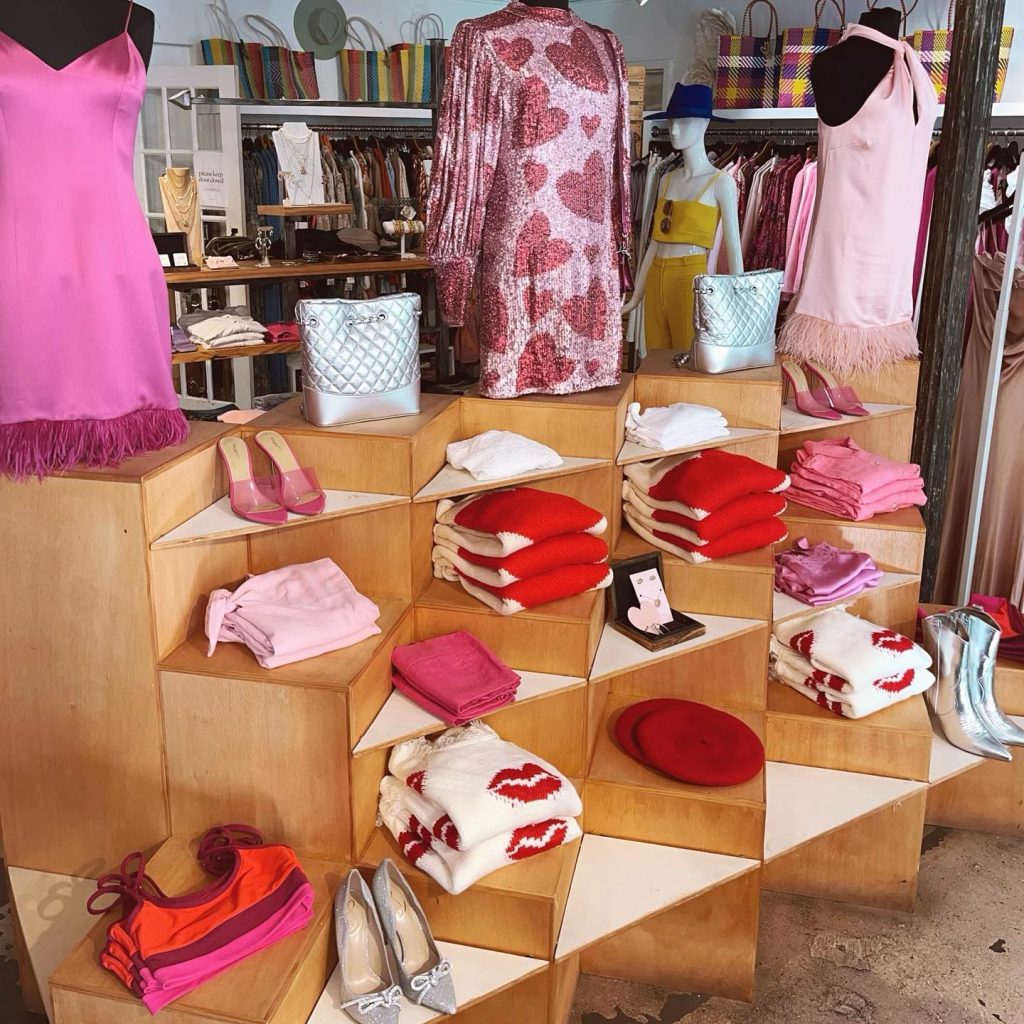Top 10 Must-Have Pieces from Your Favorite Boutique Fashion Shops
Top 10 Must-Have Pieces from Your Favorite Boutique Fashion Shops
Blog Article
Discovering the Evolution and Influence of Clothes on Modern Fashion Trends
The development of clothing has significantly influenced contemporary fashion trends, merging historic precedents with sophisticated innovations. Iconic numbers like Coco Chanel and Yves Saint Laurent revolutionized the style market by introducing concepts that focus on comfort and access, which proceed to resonate today.
Historical Style Influencers
In the tapestry of style history, specific figures have left an indelible mark, shaping the trends and designs that define whole eras. Coco Chanel, a cutting edge developer, redefined women's fashion by presenting comfy, stylish apparel that left from restrictive corsets. Her famous Chanel suit and little black outfit have actually ended up being timeless staples in closets worldwide. Christian Dior's post-war "New Look" in 1947, with its event of womanhood with complete skirts and cinched waists, noted a return to opulence and has actually proceeded to affect developers.
Elsa Schiaparelli is one more essential figure, renowned for her avant-garde designs that incorporated surrealist art, working together with Salvador Dalí to produce whimsical pieces that challenged conventional aesthetic appeals. Her ingenious use of color and vibrant patterns reverberates in modern fashion. Yves Saint Laurent, at the same time, equalized haute couture with prêt-à-porter collections, bringing path styles to the masses and establishing a criterion for modern ready-to-wear lines.
These dreamers, to name a few, not just changed style in their times however also established enduring trends that resonate in today's fashion business, offering a foundation upon which contemporary developers remain to develop and innovate. Their legacies underscore the significance of imagination and bold in vogue's ever-evolving narrative.
Technical Advancements in vogue
In the middle of the dynamic landscape of the fashion industry, technical advancements stand at the leading edge of innovation, improving exactly how designers develop and consumers involve with fashion. The combination of 3D printing has transformed style processes, allowing designers to experiment with complex frameworks and sustainable materials that were formerly impossible. This modern technology promotes fast prototyping, decreasing waste and accelerating manufacturing times.

Smart textiles, embedding modern technology right into materials, are additionally changing the market. Innovations like temperature-regulating and self-cleaning fabrics use enhanced capability and convenience. Wearable technology, integrating functions like physical fitness monitoring and communication, adds a brand-new measurement to fashion, combining aesthetic appeals with practicality.
Cultural Shifts and Style
As technological innovations remain to improve the garment industry, cultural shifts are similarly influential, redefining style and customer choices. In recent times, the rise of social media systems has sped up the dissemination of global style trends, permitting varied cultural influences to exist side-by-side and assemble. This electronic interconnectivity has actually facilitated the rapid exchange of concepts, bring about an extra diverse and comprehensive analysis of design that mirrors the multifaceted nature of modern-day culture.
Cultural understanding and gratitude have actually motivated designers to attract ideas from a broader spectrum of ethnic and historical contexts, incorporating traditional motifs with contemporary visual appeals. pop over to this site This combination has led to fashion that resonates with a larger audience, advertising a feeling of identity and belonging across different demographics. In addition, the increasing need for customization has driven brand names to offer customizable options, enabling consumers to reveal uniqueness while showing their cultural heritage.
Moreover, changing social worths have impacted style, with inclusivity and variety becoming main themes. The sector has actually started to welcome designs and influencers of different type of body, ethnic cultures, and gender identities, tough traditional elegance requirements. This change emphasizes the power of social shifts fit the future of fashion, as design becomes a more genuine expression of article source individual and cumulative identification.
Sustainability and Modern Style
While the fashion market proceeds to develop, the necessary for sustainability has come to be significantly urgent, affecting modern-day design practices. The increase of slow fashion, which highlights high quality over amount, motivates consumers to invest in timeless pieces rather than transient trends.
Additionally, modern-day style is identified by its development in minimizing waste and advertising circularity. This technique not only alleviates ecological influence however additionally boosts the social duty of fashion homes.

Future Trends in vogue

Sustainability will remain to be a driving force in forming future fashion fads. The industry is increasingly adopting environment-friendly products and ethical manufacturing methods, reacting to an expanding consumer demand for responsible techniques. Innovations such as bio-fabricated materials and closed-loop recycling systems are set to redefine how clothing is created and taken in, decreasing ecological impact while keeping design and high quality.
Cultural changes, including the surge of inclusivity and variety, will certainly additionally play a pivotal duty. As society becomes a lot more knowledgeable about social concerns, fashion is anticipated to come to be a system for expression and adjustment. Designers will likely concentrate original site on developing collections that mirror a broader variety of experiences and identities, championing representation and access.
Final Thought
The development of garments significantly impacts contemporary style patterns, where historical impacts merge with contemporary designs. This continuous advancement emphasizes style's duty as a mirror to social values and technical development, suggesting a future abundant with advancement and inclusivity.
The evolution of clothing has actually substantially affected modern fashion trends, merging historic precedents with sophisticated technologies.Among the dynamic landscape of the fashion industry, technological innovations stand at the forefront of advancement, reshaping just how designers develop and customers engage with style.While the style sector proceeds to advance, the critical for sustainability has actually ended up being significantly immediate, influencing contemporary layout methods. As sustainability ends up being embedded in modern layout, it leads the method for a more mindful and responsible fashion sector.
The development of garments considerably impacts modern style fads, where historical influences merge with modern styles.
Report this page